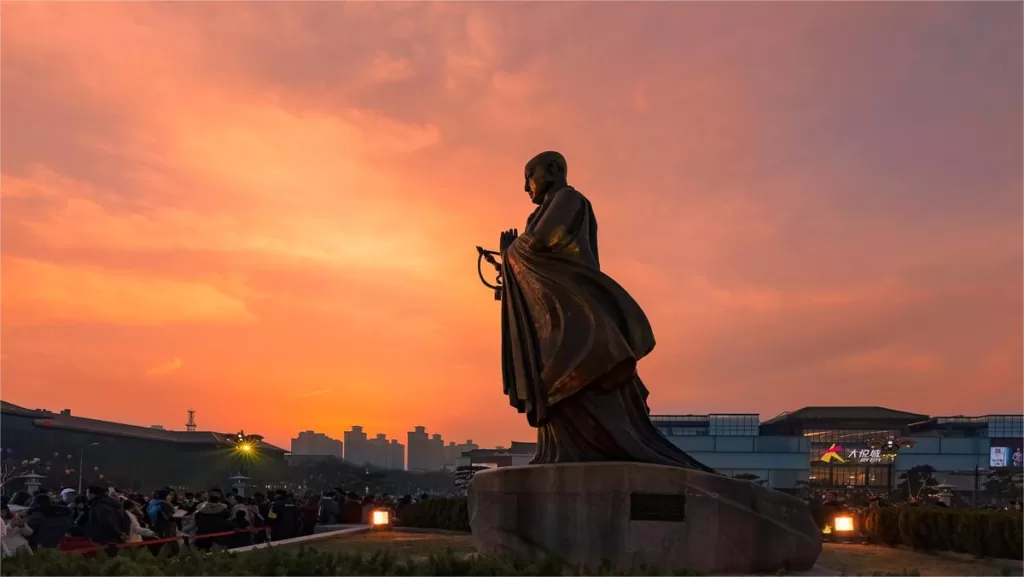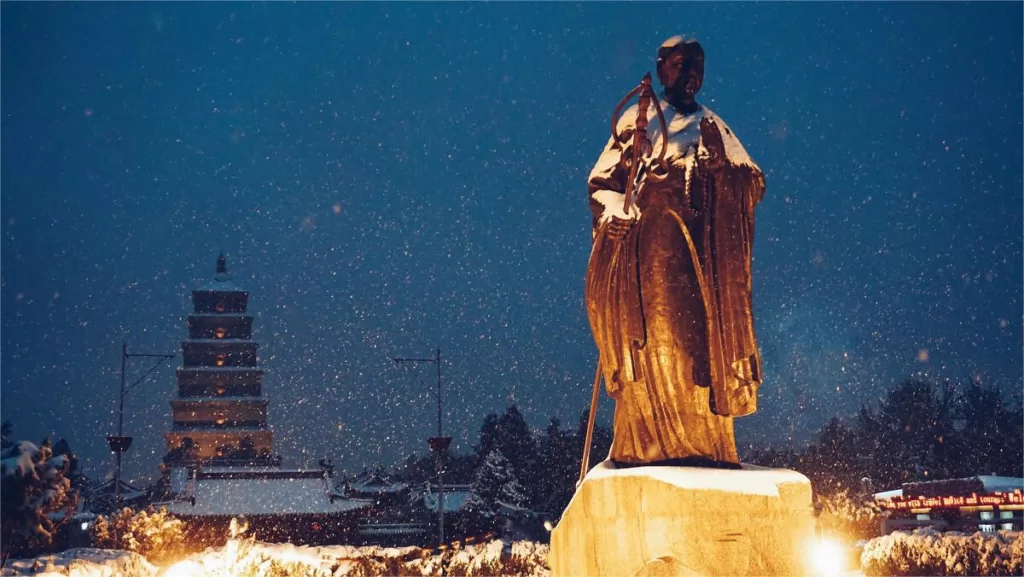Xuanzang‘s journey to the West is a legendary pilgrimage that took place during the Tang Dynasty in China. The story has been immortalized in the Chinese classic novel “Journey to the West” (also known as “The Monkey King”), which is attributed to the Ming Dynasty author Wu Cheng’en. It is considered one of the Four Great Classical Novels of Chinese literature.
The central character of the story is Xuanzang, a Buddhist monk who lived during the 7th century. Xuanzang was determined to obtain sacred Buddhist scriptures from India to enhance the practice and understanding of Buddhism in China. At the time, Buddhism was already well-established in China, but many scholars believed that the translations of the scriptures available were flawed and incomplete.
In 629 AD, Xuanzang set out on his perilous journey, leaving the ancient capital city of Chang’an (present-day Xi’an) with the blessing of Emperor Taizong of the Tang Dynasty. He embarked on a rigorous and treacherous pilgrimage, facing numerous challenges, supernatural creatures, and temptations along the way.
Xuanzang’s journey took him through vast stretches of the Silk Road, a network of ancient trade routes connecting China with Central Asia, the Middle East, and eventually, India. The Silk Road was known for its dangers, including harsh climates, bandits, and unforgiving terrains.
During his journey, Xuanzang encountered various mythical creatures and deities, most notably the mischievous Monkey King, Sun Wukong, who became his loyal disciple and protector. Sun Wukong possessed incredible powers and often used them to aid Xuanzang in overcoming the obstacles they faced.
Together with Sun Wukong and a group of other eccentric disciples, including Zhu Bajie (Pigsy) and Sha Wujing, Xuanzang traveled through treacherous mountains, crossed vast deserts, and braved turbulent rivers. Along the way, they encountered demons, monsters, and other supernatural beings who sought to obstruct their journey.
Their adventures were not limited to physical challenges alone. Xuanzang and his companions also faced spiritual and moral trials, testing their resolve, faith, and commitment to the Buddhist path. These trials were often depicted as battles against powerful demons who represented various vices and human weaknesses.
Despite the numerous hardships and dangers, Xuanzang remained steadfast in his mission. He persevered, refusing to resort to violence or compromise his principles, and constantly sought to spread compassion and enlightenment. His unwavering devotion and pure heart eventually earned him the help and protection of the Bodhisattvas and other celestial beings.
After a grueling 17-year journey, Xuanzang finally reached India, where he studied and translated numerous Buddhist scriptures. He spent several years studying at the famous Nalanda University and collecting valuable texts before he began his return journey to China.
Xuanzang brought back a vast collection of Buddhist scriptures, including the Heart Sutra, the Diamond Sutra, and the Lotus Sutra, among others. These texts significantly contributed to the development and understanding of Buddhism in China, and Xuanzang himself became a revered figure in Chinese history and Buddhist traditions.
The story of Xuanzang’s journey to the West is not only a fantastical adventure but also an allegory for the spiritual journey of self-discovery, enlightenment, and the triumph of good over evil. It continues to captivate audiences with its rich mythology, moral lessons, and timeless themes.
Facts about Xuanzang




